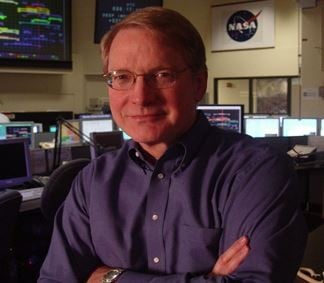A huge asteroid, about one third of a mile (0.5km) wide, will hurtle near earth on January 26th. Although it will be relatively near, about 745,000 miles from the Earth’s surface, i.e. around three times the distance from the Earth to the Moon, the huge rock known as 2004 BL86 will pose no danger to us.
According to Don Yeomans, who is retiring as manager of NASA’s Near Earth Object Program Office at the Jet Propulsion Laboratory (JPL) in Pasadena, California:
“It will be the closest asteroid 2004 BL86 will get to Earth for at least the next 200 years. And while it poses no threat to Earth for the foreseeable future, it’s a relatively close approach by a relatively large asteroid, so it provides us a unique opportunity to observe and learn more.”
If you have a small telescope or a strong pair of binoculars, you should be able to see the giant rock whizz past in front of the constellations Hydra, Cancer and Leo.
This NASA image shows the passage of asteroid 2004 BL86, which will pass near Earth on January 26th, 2015. (Image: NASA/JPL-Caltech)
The event is notable because it will the closest of any known asteroid this big until asteroid 1999 AN10 hurtles past Earth in 2027.
NASA scientists plan to learn more about the asteroid by observing it with microwaves. NASA’s Arecibo Observatory in Puerto Rico, and its Deep Space Network antenna at Goldstone, California, will try to gather science data and radar-generated images of the rock during the days it is closest to Earth.
Radar astronomer Lance Benner of JPL, the lead investigator for the Goldstone radar observations of the asteroid, said:
“When we get our radar data back the day after the flyby, we will have the first detailed images. At present, we know almost nothing about the asteroid, so there are bound to be surprises.”
The asteroid was first discovered by a telescope of the Lincoln Near-Earth Asteroid Research (LINEAR) survey in White Sands, New Mexico, in 2004.
Mr. Yeomans said:
“I may grab my favorite binoculars and give it a shot myself. Asteroids are something special. Not only did asteroids provide Earth with the building blocks of life and much of its water, but in the future, they will become valuable resources for mineral ores and other vital natural resources.”
“They will also become the fueling stops for humanity as we continue to explore our solar system. There is something about asteroids that makes me want to look up.”
Mr. Yeomans retired on January 9th after 39-years at the Jet Propulsion Laboratory. (Image: NASA)
Paul Chodas, who has been a member of Mr. Yeomans’ team at JPL for many years, has been designated as the new manager.
Asteroids are irregularly shaped rocky objects (smaller than planets) in our Solar System that orbit the Sun.



